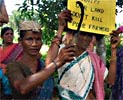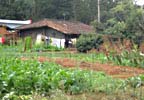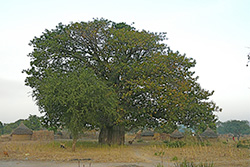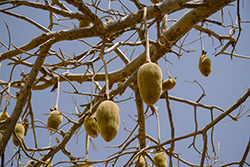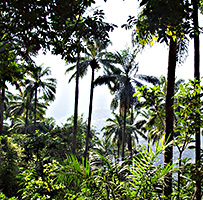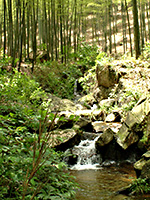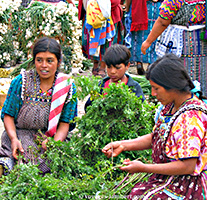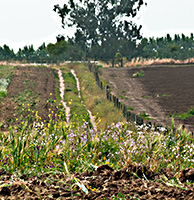A village in the Sahel, Africa – 1999
The Baobab
“You really don't know where the people are coming from? You have no idea? Come on, I can't believe that.” The storyteller with his white robe and turban and his small white drum looks around the big circle of children with friendly, challenging eyes. They all sit in the shadow of the village tree, a giant baobab.
“Where are the people coming from?” he repeats. “From a tree,” says a boy shyly. “From the Magic Tree,” a sharp girl's voice shouts. “That's right,” the storyteller affirms. “Long, long ago, the first child of the world crawled out of the Magic Tree, the Omumborombuga.
He was sitting comfortably in the cool shade of the Omumborombuga, but he felt lonely. Sometimes, he got hungry and thirsty. What should he do? He saw all types of trees and bushes, but one tree he liked most. It was an old baobab. He walked to it and tried to embrace the trunk. But it was so thick that his arms could not cover the half of it. The baobab was so moved by the embrace that it quickly produced delicious, juicy fruits for the boy to eat and drink.”
The children listened breathlessly. “Since that time, the boy and the baobab were best friends. When the boy was sick, the baobab helped him with its medicinal leaves. It shared dry branches with him when he felt cold in the evening. It shared big branches when he wanted to build a hut and fibres of bark to make baskets. The boy and the baobab were so happy together.”
“Later on, the boy married and had many children. He became very old and died in the shadow of his beloved baobab. When he died, the leaves rustled a sad farewell song. The spirit of the boy went on living in the baobab and is still living here. All our ancestors are living here. Sometimes you will hear them whisper in the evening when it becomes dark, or you see them vaguely in the early morning fog.”
The children sighed. It was a nice story. “And now I will teach you the baobab song,” continues the storyteller and starts drumming and singing.
_______________________
Source
The children's book De bomen van Afrika – verhalen en legenden uit de Sahel (1999) of the Italian writer Carla Barbarella gives information about trees from the Sahel and tells old stories.
Go to:
= the next page: Ayoub - a hamlet in Central Morocco – 1999, story 150.
= the Table of contents, story 149.
